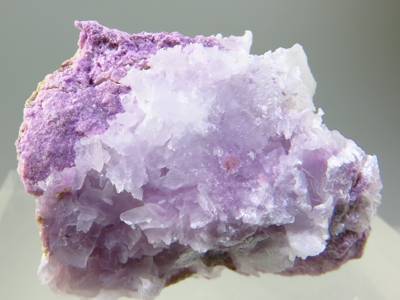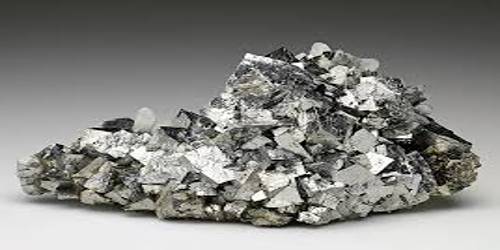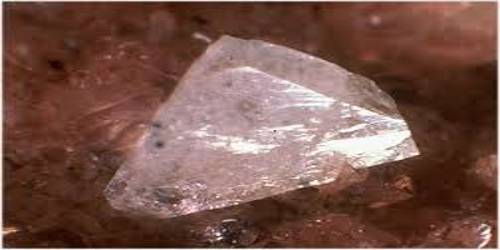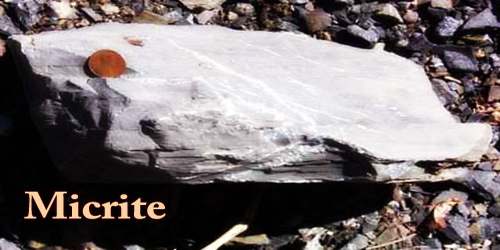Bentorite is a mineral with the chemical formula Ca6(Cr, Al)2(SO4)3(OH)12·26(H2O). It is a rare sulfate with chromium, which most likely is the cause of the lilac or purple color. Its crystals are hexagonal to dihexagonal dipyramidal. It is transparent and has a vitreous luster. It has perfect cleavage. It is not radioactive. Bentorite is rated 2 on the Mohs Scale. It is not Radioactive.
Information Source
- Formula: Ca6(Cr, Al)2(SO4)3(OH)1226(H2O)
- Colour: Violet to rose-purple
- Lustre: Resinous, Waxy, Earthy.
- Hardness: 2
- Specific Gravity: 2.025
- Crystal System: Hexagonal
- Member of: Ettringite Group.

Properties
- Transparency: Transparent
- Comment: Originally said to be vitreous
- Colour: Violet to rose-purple
- Streak: Very pale purple
- Cleavage: Perfect{10-0} perfect; {0001} good
- Fracture: Sub-Conchoidal
- Density: 2.025 g/cm3 (Measured) and 2.021 g/cm3 (Calculated).
Occurrence: In low-temperature hydrothermal veins in black calcite–spurrite marble.
The mineral was first described in 1980 by Shulamit Gross for an occurrence in the Hatrurim Formation of Danian age along the western margin of the Dead Sea, Israel. It was named for Yaakov Ben-Tor (1910–2002), Professor at the Hebrew University of Jerusalem and the University of California, San Diego, California, US, for his contributions to geology and mineralogy in Israel.
Association: Calcite, thaumasite, truscottite, vaterite, jennite, tobermorite, brownmillerite, mayenite, melnikovite, “chlorite”.
Information Source:
















